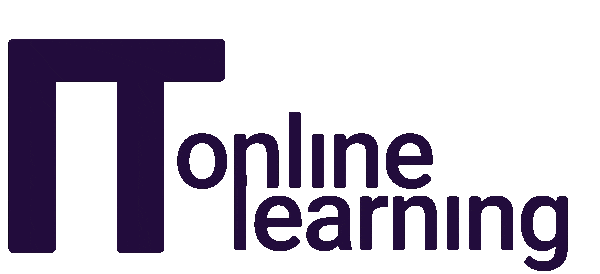Front-end development refers to the process of creating the parts of a website or application users see and interact with directly.
It involves designing and developing the layout, visual elements, and interactive features that users see and engage with when they visit a website or use a web application.
Front-end developers (the name for these professionals who do this job) use a combination of programming languages, tools, and technologies to build user interfaces and user experiences.
The three main programming languages used are:
- HTML (Hypertext Markup Language)
Used to structure the content and create the basic building blocks of a webpage.
- CSS (Cascading Style Sheets)
Styles the visual presentation of HTML content, including colours, fonts, layouts, and responsive design for different screen sizes.
- JavaScript
Is used to add interactivity, dynamic behaviour, and client-side functionality to web pages, such as form validation, animations, and real-time updates.
What Programming Languages Are Used on a Web Page?
When you visit a website, you see a combination of text, images, videos, and interactive elements.
These elements are created using front-end languages.
HTML (Hypertext Markup Language), CSS (Cascading Style Sheets), and JavaScript are the three primary languages used to build a website’s front end.
What Are Programming Languages Used For?
Programming languages are the building blocks of web development. They allow developers to communicate with computers and instruct them on performing specific tasks.
In the case of front-end development, HTML is used to structure the content, CSS is used to style the content, and JavaScript is used to add interactivity and functionality to the web page.
HTML and its Importance in Front-End Development
HTML is the backbone of any web page. It provides the structure and semantic meaning to the content on a website.
HTML is responsible for organising headings, paragraphs, lists, images, links, and other elements.
Without HTML, a web page would be a chaotic mess of unformatted text and images.
Understanding the Basic Structure of HTML
HTML follows a hierarchical structure called the Document Object Model (DOM).
The DOM organizes elements in a tree-like structure, with the root element being the <html> tag.
Inside the <html> tag, you will find the <head> and <body> tags.
The <head> tag contains meta-information about the web page, such as the title and links to external stylesheets, while the <body> tag contains the actual content visible to the user.
HTML Tags: Understanding Their Uses
HTML is made up of various tags that define the purpose and structure of different elements on a web page.
For example, the <h1> tag is used for headings; the <p> tag is used for paragraphs and the <img> tag is used for images.
Each tag serves a specific purpose and can be customized using attributes.
Understanding the different HTML tags is essential for creating well-structured and accessible web pages.
Introduction to CSS and Its Role in Front-End Development
CSS is the language used to style the elements on a web page.
It determines how the content is presented, including aspects such as colours, fonts, layout, and animations.
CSS allows you to create visually appealing and responsive designs, making websites more engaging and user-friendly.
Learning CSS Syntax and Selectors
CSS follows a simple syntax that consists of a selector and a declaration block.
The selector targets the HTML element you want to style, and the declaration block contains the properties and values that define the style.
For example, to change the background colour of all paragraphs on a web page, you would use the selector p and set the background-color property to your desired value.
Styling HTML Elements with CSS
Cascading style sheets provide a wide range of styling options to transform the appearance of HTML elements.
You can change the font family, size, and colour, adjust the margins and padding, create borders and shadows, and even add animations and transitions.
By mastering CSS, you can bring your designs to life and create visually stunning web pages.
What Is JavaScript and Why Is It Important in Front-End Development?
JavaScript is a powerful programming language that adds interactivity and dynamic functionality to web pages.
While HTML and CSS handle the structure and presentation, JavaScript allows you to create interactive elements, perform calculations, validate forms, and fetch data from servers.
It is the language that brings life to static web pages.
Introduction to JavaScript Syntax and Variables
JavaScript syntax is similar to other programming languages, making learning relatively easy.
You can declare variables to store data, perform mathematical operations, manipulate strings, and control the flow of your code using conditionals and loops.
JavaScript also provides a wide range of built-in functions and methods that allow you to manipulate HTML elements and respond to user actions.
Adding Interactivity With JavaScript
One of the most exciting aspects of front-end development is adding interactivity to web pages using JavaScript.
With JavaScript, you can create interactive forms that validate user input, build sliders and carousels, implement drag-and-drop functionality, and even develop games.
JavaScript empowers you to create a dynamic user experience that engages and delights website visitors.
Have You Been to a restaurant lately?
Let’s use an example of a place we know well, a restaurant, to describe how HTML, CSS and Javascript combine.
Imagine a web page as a restaurant.
HTML (Hypertext Markup Language) is the foundation, like the restaurant’s structure and layout.
HTML provides the basic structure of the page, defining headings, paragraphs, and other elements. It’s the sturdy foundation of a restaurant, keeping everything organised and structured.
CSS (Cascading Style Sheets) is like the restaurant’s interior designer.
As an interior designer adds colours, styles, and themes to make a restaurant visually appealing, CSS adds style and presentation to HTML.
It controls the colours, fonts, spacing, and overall look of the web page, making it visually attractive and pleasant for visitors.
Now, let’s compare JavaScript to the chefs and waitstaff of the restaurant.
Chefs bring life to the restaurant by adding dynamic and interactive elements to the dining experience.
Similarly, JavaScript brings interactivity to web pages.
It enables functionalities like interactive forms, animations, and real-time updates. JavaScript is the language that allows the web page to respond to user actions, making it dynamic and engaging.
Tip: When HTML, CSS, and JavaScript work together, they create a seamless and enjoyable web experience.
ITonlinelearning IT Courses and Qualifications Also Worth Looking Into
Ideal for people starting a career or looking to validate skills in IT technical support.
Covers topics relating to:
- Hardware
- Operating systems,
- Software troubleshooting
- Networking
- Security
- Operational procedures
Prepares you for entry-level IT positions in the UK.
Includes: CompTIA A+, CompTIA Network+ Courses.
Explore: IT Technician Career Programme
This is an entry-level certification ideal for people looking to start a career in IT or who want to validate their existing skills.
Covers topics relating to:
- Hardware
- Operating systems,
- Software troubleshooting
- Networking
- Security
- Operational procedures
Prepares you for entry-level IT positions in the UK. Can be leveraged to ask for more money and promotions. It includes the CompTIA A+ Course.
Explore: CompTIA A+ Course








